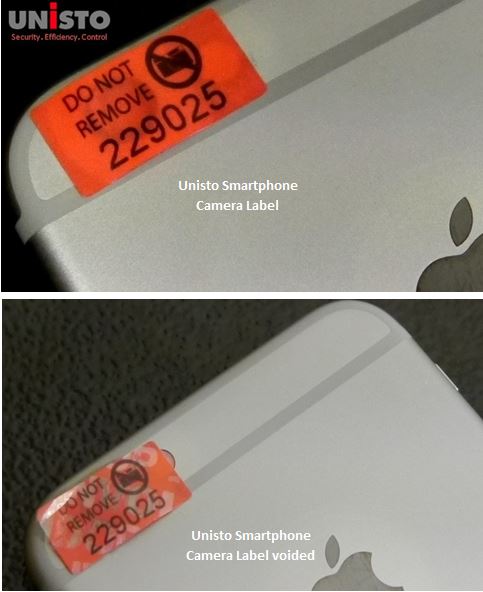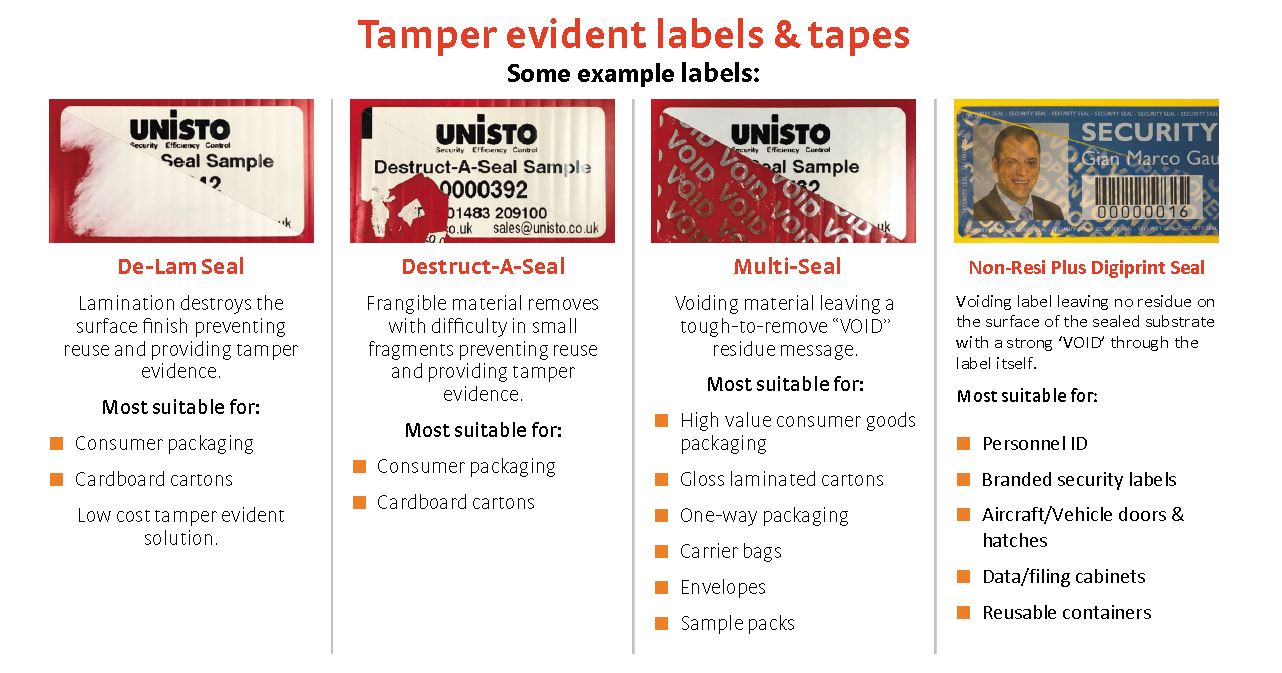Posted: Friday, 26 October 2018 @ 14:15
Tamper evident labels, security stickers or whatever you call them can play a very handy role in your security regime particularly for direct sales to consumers via online shopping channels where a third party parcel carrier, or perhaps several will get involved with the package before it reaches the purchaser.
Conventional security seals require a latch or eyelet to seal through and there are some areas that need sealing for which no latch exists, cardboard boxes for example. Aircraft doors and external hatches are also an accepted area where tamper evident labels play an important part. Aircraft are streamlined and anything creating turbulence or drag is a complete no-no. Unisto supplies several major European airlines with tamper evident void labels that leave behind no residue when removed but provide evidence of entry to the aircraft when parked-up, unattended on the airport apron overnight. These labels are branded and numbered and controlled and audited by the airline ground staff and airport security.
In the transport arena there are several areas where tamper evident labels can be effective. Van doors normally have no latches to seal, they may well have locks but as we know locks are unreliable security devices, they can be picked or just opened with a duplicate key, goods removed and relocked leaving no trace of evidence. Using a security Non Resi void label provides the evidence of opening.
Now fully integrated label production equipment allows full colour print, Unisto can provide images such as logos and photographs reproduced either in batches or as individual images within a production run. This individualisation combined with sequential numbering, barcode and a strong void message when removed gives a level of security that was previously impossible.
Other items that require sealing are driver’s boxes, first aid and ADR kits to ensure that a fully compliant and complete kit is handed over to the driver by the transport office team.
Many logistics firms now require visitors to distribution centres undertaking sensitive work for clients to disable  photographic equipment on mobile phones and laptop computers, a tamper evident non residue leaving void label is a very effective method to cover smartphone cameras. The number on the label can be linked to the visitor badge ensuring traceability.
photographic equipment on mobile phones and laptop computers, a tamper evident non residue leaving void label is a very effective method to cover smartphone cameras. The number on the label can be linked to the visitor badge ensuring traceability.
Residue leaving labels such as De-Lam, Destruct-A-Seal, and MultiSeal are ideal for transit packaging such as cardboard cartons and consumer packaging. Each type of label has specific properties that make it suitable for particular applications to provide both security and cost benefits. All self-adhesive materials are only as effective as the surface they are applied to. The surface condition needs be considered, roughness, smoothness, porosity, coated, uncoated, cleanliness, flexibility, temperature conditions, wet or dry, and finally, surface energy. Unisto appreciate this and produce a range of security label and tape solutions using a broad range of adhesives, inks and films to ensure the best possible solution for the application in hand.
All surfaces have energy associated with them, because work is needed to form them. These are the forces that are required to hold the molecules together to form the surface, whether it’s a desk top or a cardboard box. These surfaces are referred to as either low energy or high energy.
Low energy surfaces for example acrylic, plastics, rubber and composites. These surfaces are harder for labels and tapes to stick to.
High energy surfaces for example glass and car paint are easier for labels and tapes to adhere to.
To understand the surface energy of a product it is easy to perform a simple experiment using a drop of water. Surfaces can be
Hydrophobic (hate water) or Hydrophilic (love water).
Low surface energy Hydrophobic surfaces repel the water so the droplets sit proud on the surface in a high dome, whereas on high surface energy hydrophilic surfaces the droplet sits lower and flatter.
Low surface energy = poor adhesion properties
High surface energy = good adhesion properties
Whilst security labels are sometimes considered to be secondary to thermo-plastic and metal security seals, advances in adhesive technology have made them an excellent all-round solution that provides quick, neat and convenient tamper evident security to the otherwise unsecureable.

www.unisto.co.uk